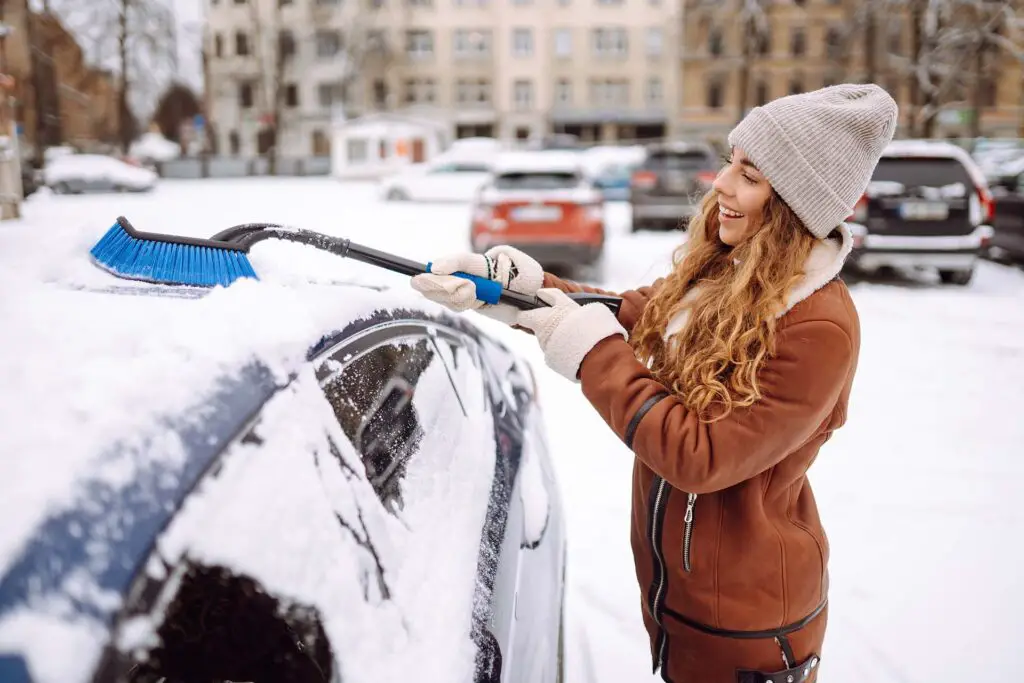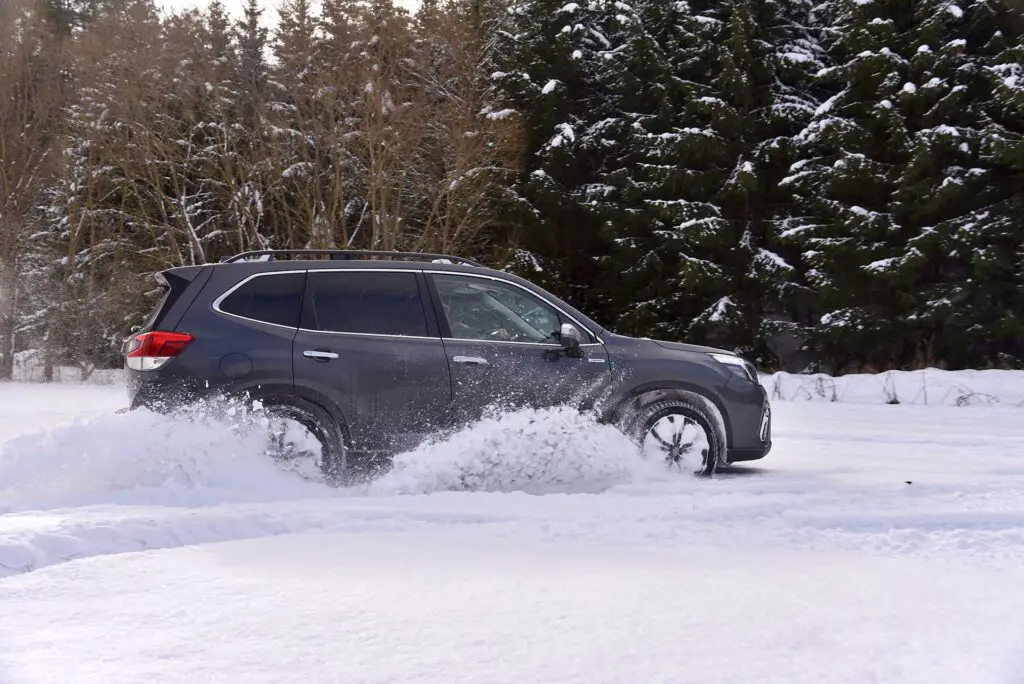Winter’s coming, and while the snow might look magical, it can be a real headache for car owners. From icy windshields to stubborn salt stains, the colder months can take a toll on your vehicle. But don’t worry. In this guide, we’ll dive into how to protect your car from snow and keep it safe, clean, and running smoothly all winter long. Whether prepping for a big storm or battling the daily frost, these tips will help you stay ahead of the freeze. Let’s get started!
To protect your four-wheeler from snow, park in a garage or use a quality car cover to shield it from the elements. Apply a coat of wax for extra protection, use all-weather floor mats, and keep your windshield covered to prevent ice buildup. Regularly clean off snow and salt to avoid corrosion and ensure your machine stays in great shape all winter long.
Why Snow Can Be Harmful to Your Car
Snow might look harmless, but it can lead to serious damage if you’re not careful. Winter weather can wreak havoc on your vehicle, from freezing temperatures to moisture buildup. Learning how to protect your car from snow can save you from costly repairs. Snow can seep into cracks, causing rust and weakening your car’s structure over time. Without proper precautions, your vehicle’s performance and appearance may deteriorate. Preparing your car for snow now can ensure it stays in great shape all season long.
Effects of Snow and Ice on Car Exteriors
Snow and ice can be tough on your car’s exterior, leading to scratches, dents, and paint damage. As snow melts, it can create water spots that degrade the machine’s finish. Ice, on the other hand, can form around delicate components like wipers and seals, causing wear and tear. Knowing how to protect your car from snow and salt with preventive measures, such as waxing and covering it properly, can prevent this kind of damage. A little care goes a long way in preserving your car’s glossy showroom look during winter.
The Impact of Road Salt on Your Vehicle
Road salt is a winter essential for clearing icy roads, but it’s a nightmare for your four-wheeler. Salt can stick to the undercarriage, causing corrosion and rust that weaken structural components. It can also dull your car’s paint over time. The best way to protect your machine from salt damage is through regular washing, especially focusing on the undercarriage, and applying a protective layer to exposed areas. Investing in these preventive measures ensures your car stays free of rust and in great condition throughout the snowy season.

Prepare Your Car for Winter Weather
Getting your four-wheeler ready for cold weather is essential to keep it safe and running smoothly. From swapping out your tires to applying protective products, every small step makes a difference. Winter preparation also means choosing tools like the snow shovel for your car and investing in proper maintenance. A well-prepared machine is less likely to encounter issues like freezing or reduced traction, ensuring a safer driving experience even in the harshest winter conditions.
Inspecting Tires and Brakes
Understanding the difference between winter and summer tires is key to maintaining control on icy roads. Winter tires offer better grip in snowy conditions due to their deeper treads and softer rubber compounds. The best winter tires for an SUV or any vehicle are designed to handle extreme cold and slippery surfaces. Additionally, inspect your brakes to ensure they respond effectively in wet and icy conditions. Regularly maintaining these components will enhance your car’s winter performance and safety.
Applying a Protective Coat of Wax
Winter weather exposes your car’s exterior to snow, ice, and salt, which can damage its finish. Applying a protective coat of wax creates a barrier against these elements. Pair this step with regular cleaning tools like the snow brush to gently remove snow without scratching the paint. Additionally, antifreeze plays a role in keeping your four-wheeler safe from extreme temperatures. If you’re wondering what type of antifreeze your car needs, consult your owner’s manual or a trusted mechanic for the ideal match.

Use a Quality Car Cover
Investing in a high-quality car cover is one of the smartest ways to shield your vehicle during snowy weather. A good cover acts as a protective barrier, keeping snow, ice, and salt off your machine while preventing scratches and corrosion. Whether you park outdoors or in an open garage, the right car cover ensures your vehicle stays in top condition throughout the winter.
Choosing the Right Cover for Snow Protection
Not all covers are created equal, especially when it comes to snow protection. Look for waterproof, weather-resistant materials that can withstand harsh winter conditions. Features like soft inner linings protect your paint, while UV-resistant layers guard against winter sun damage. If you drive an SUV, ensure you choose a size that fits snugly. The best snow shovel for your four-wheeler should also pair well with your cover by removing snow around the vehicle without causing damage.
How to Properly Secure a Car Cover
Securing a car cover properly ensures it stays in place during windy, snowy days. Use elastic hems or straps to anchor the cover securely, and adjust it to avoid loose sections that can flap and scratch your car. For extra stability, consider covers with built-in grommets for tie-downs. Before covering your four-wheeler, remove snow and ice with the snow scraper to prevent buildup underneath.

Park Smartly to Avoid Snow Damage
Where you park your machine during the winter can make a huge difference in protecting it from snow and ice damage. Although garage parking is the best option, not everyone has access to one. In order to keep your car in excellent condition during snowy conditions, you must be able to adjust both indoors and outdoors.
Benefits of Parking in a Garage
Parking in a garage is one of the most effective ways to protect your car from harsh winter weather. It shields your vehicle from snow, ice, and freezing temperatures, reducing the risk of damage to the exterior and mechanical components. This is especially important for high-value vehicles like classic cars or some of the best electric cars. A garage also prevents snow buildup, making mornings less stressful. If you drive a modern SUV like a Jeep Grand Cherokee or Toyota 4Runner, parking indoors helps preserve the advanced systems these vehicles rely on for optimal winter performance.
Alternative Solutions for Outdoor Parking
If a garage isn’t an option, there are still ways to minimize snow damage when parking outdoors. Use a high-quality car cover or park under a carport to reduce exposure to snow and ice. Choosing a well-sheltered spot, such as next to a building or under sturdy trees, can also help.
To learn how to protect your car from snow without a garage, focus on proactive measures like applying a protective wax coating, clearing snow promptly, and ensuring your windshield is covered to prevent ice buildup. Regular snow removal and protective measures are beneficial for all types of vehicles, including the best electric cars for snow and everyday models like the Toyota Corolla, Honda Civic, and Audi A3. Whether you drive a modern or classic car, these strategies can make a big difference in safeguarding your vehicle during winter.

Protect Your Windshield and Windows
Using windshield covers is an easy way to shield your four-wheeler from snow and ice buildup, saving you time and effort on frosty mornings. These covers act as a protective barrier, preventing ice from forming directly on the glass. When deicing, avoid sharp tools that can scratch the surface. Instead, use a proper ice scraper and warm water, never boiling, to safely remove ice. For added protection, keep your windshield washer fluid filled with a winter-specific formula. Combining these tips ensures your windshield and windows stay clear, undamaged, and ready for any winter drive.
Safeguard Your Car’s Undercarriage
Winter roads are a cocktail of snow, ice, and salt—great for traction but terrible for your car’s undercarriage. Regular washing is your secret weapon to keep rust and corrosion at bay. A quick rinse, especially after driving on salted roads, can work wonders in removing grime and residue. Don’t forget to hit those hard-to-reach spots! Think of it as giving your car a spa day to recover from the winter chaos. With a little care, your undercarriage stays strong and ready to face whatever the season throws its way.

Maintain a Clean Interior During Snowy Months
The winter mess doesn’t stop at the door. Your car’s interior takes a hit, too. Snow, slush, and salt sneak in on your boots, but all-weather floor mats are here to save the day. They’re like armor for your carpets, trapping the gunk before it settles. Add seat covers for extra protection against wet jackets or gear, and your interior will thank you. Keeping things clean and cozy inside makes every winter drive a little more enjoyable, no matter how messy the roads get. It’s all about smart choices to keep your ride looking and feeling fresh!
Keep Your Battery in Check During the Winter
Wintertime puts extra strain on your car’s battery, and low temperatures can drastically impair its performance. By being proactive with maintenance, annoying issues like failing systems or no starts can be avoided. Regular checks and timely replacements ensure your battery stays reliable, even in freezing conditions.
Signs of Battery Issues in Cold Weather
Cold weather can take a serious toll on your car’s battery, making it harder to start your engine and power essential systems. One common issue is slow engine cranking, which happens because low temperatures reduce the battery’s ability to produce power. Dim headlights or dashboard lights can also indicate a struggling battery in winter. Corrosion on the terminals, caused by moisture and salt, can worsen the problem by interfering with connections. To avoid being stranded, check your battery regularly, clean the corroded terminals, and consider a battery warmer for extremely cold climates.

Essential Tools and Supplies for Snowy Days
When winter strikes, having the right tools can make all the difference between a smooth start to your day or a frosty struggle. From clearing snow to ensuring your car runs efficiently, stocking up on essentials keeps you prepared for whatever the season throws your way. Here’s a checklist of winter must-haves:
- Snow brush and ice scraper – For clearing snow and ice from windows and mirrors.
- Snow shovel – Compact and ideal for digging out your four-wheeler.
- Windshield cover – Prevents ice and frost buildup.
- All-weather floor mats – Protect your car’s interior from snow and salt.
- Tire chains or snow socks – For extra traction on icy roads.
- Portable jump starter – A lifesaver for cold mornings when your battery fails.
- Emergency kit – Includes blankets, a flashlight, flares, and a first aid kit.
- Winter windshield washer fluid – Prevents freezing and improves visibility.
- Tire pressure gauge – Cold temperatures can reduce tire pressure.
- Deicer spray – Quickly melts ice on locks and windows.
- Gloves and snow boots – For staying warm and safe while working outside.
Keep Your Car Winter-Ready
Winter can be tough on your car, but a little preparation goes a long way in keeping it safe, functional, and looking great. From protecting your windshield and undercarriage to choosing the right tools and parking smartly, you’re now armed with all the tips and tricks to survive the snowy months. Whether you’re braving icy roads or digging out after a storm, these strategies will help you handle winter like a pro. So bundle up, get your car winter-ready, and enjoy the season without worrying about the snow and ice taking a toll on your ride!








